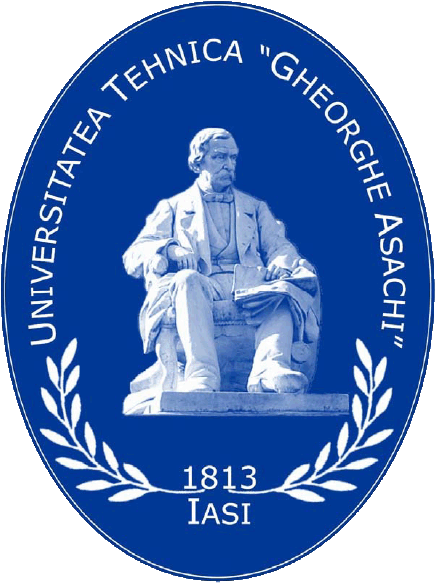Technical University “Gheorghe Asachi” of Iaşi
“Cristofor Simionescu” Faculty of Chemical Engineering and
Enviromental Protection
Department of Environmental Engineering and Management


Valorisation of waste biomass from biofuels production in biosorption processes of heavy metals with application in environmental bioremediation
The objective of this project is is to contribute at biotechnological methods with low environmental impact development (such as biosorbtion), that can be used in environmental remedial processes, and the elaboration of treatment strategies of heavy metal contaminated industrial effluents. In this context, in this project biomass waste will be used as biosorbents, resulted from ecological combustible production for heavy metal ion removal (with toxic potential or essential microelements) from aqueous medial, in concordance with the criteria imposed by the European Union.
The technological processes studied in this project are superior to the existent technologies, from a sustainability point of view, as well as implementing costs. Also, improving the removal efficiency of heavy metal ions from aqueous media will be pursued, and via these results obtained in this project will offer a capitalization alternative of these kinds of biomass waste.

The general objective of this project is the evaluation of the applicative potential of heavy metal ions biosorbtion processes using biomass waste (resulting from biocombustible production) which will lead to the development of methodologies/procedures useful for environmental bioremediation processes.
The specific objectives of this project are:
(1) The evaluation of the current approach of biosorbtion processes, in order to select the metallic ions and biomass waste which will be used in experimental studies and in performance indicators what have to be fulfilled by the biosorbtion processes.
Research activites:
-
The evaluation of the current methodologies used in environmental bioremediation
-
The study of the environmental bioremediation processes
-
Evaluation of the performances of some biomass categories used as biosrbents
-
The prepartion of the adsorbant materials for the experimental studies
-
The selection and caracterization of the metallic ions used in experimental studies
-
Experimental data analysis
Results indicators:
- the nomination of heavy metal ions and biomass waste that will be used for experimental studies
- the establishment of performance indicators which must be fulfilled by biosorbtion processes
(2) Heavy metal ions biosorbtion (with toxic potential and essential microelements) on biomass waste, in varied experimental conditions
Research activities:
(2.1) The preparing and characterization of biomass waste used as biosorbents
(2.2) The establishment of optimal biosorbtion conditions of heavy metal ions, selected in discontinuous systems
(2.3) The evaluation and experimental data analysis (thermodynamic modelling and kinetics of biosorbtion izotherms)
(2.4) The study of biosorbtion processes in continuous systems, in varied experimental conditions
(2.5) The evaluation and experimental data analysis (Evaluarea şi analiza datelor experimentale (modelling of the puncture curves)
(2.6) The design of simple chemical treatments for improving the efficiency of biosorbtion processes.
Results indicators:
- The obtaining of the most adequate experimental conditions for the removal of every last metallic ion, for every biosorbent type
- The obtaining of the necessary parameters for the biosorbtion processes performance evaluation for their practical use.
(3) The study of reuse opportunities of exhausted biomass waste in order to recover toxic metallic ions, or as fertilizers to increase the quality of agricultural soils (in the case of essential microelements)
Research activities:
(3.1)The desorbtion of toxic metallic ions from exhausted biomass in varied experimental conditions, in discontinuous and continuous systems, in minimum 5 biosorbtion/desorbtion cycles
(3.2)The evaluation and experimental data analysis (thermodynamic modelling and the kinetic of desorbtion izotherms)
(3.3)The controlled release of essential microelements from exhausted biomass, in varied experimental conditions
(3.4)The evaluation and experimental data analysis (thermodynamic modelling and the kinetic of controlled release izotherms)
(3.4)The establishment of the capitalization possibilities of essential microelements charged biomass as fertilizers in order to increase the quality of agricultural soils
(3.5)The modelling of the desorbtion/controlled release processes
Results indicators:
- The establishment of the optimal experimental conditions for the desorbtion of every last toxic potential metallic ion
- The establishment of the optimal experimental conditions for the controlled release of every last metallic ion with the role of essential microelement
- The obtaining of necessary parameters in order to evaluate the desorbtion/controlled release processes performance, for their practical use
- The identification o capitalization possibilities of essential microelements charged biomass as fertilizers for increasing the quality of the agricultural soils.
(4)The elaboration of some integrated methods of the biotechnological processes for heavy metal ions biosorbtion from aqueous media, with the efficient monitoring possibility and the stimulation of their applicability at an industrial scale
Research activities:
(4.1)The evaluation and adjustments of biosorbtion systems for environmental bioremediation at a large scale
(4.2)The calibration of the developed methods for heavy metal biosorbtion processes from aqueous media
(4.3)The evaluation of heavy metal ions biosorbtion processes performances via cost analysis
(4.4)
Results indicators:
- The supply of a technical prototype
- The heavy metal ions biosorbtion processes performances validation via cost analysis
Through the proposed objectives, through conception and realization, this project represents an new approach of biotechnological research from our country, that pursues the elaboration of clean and ecological technologies, with applications in environmental bioremediation.